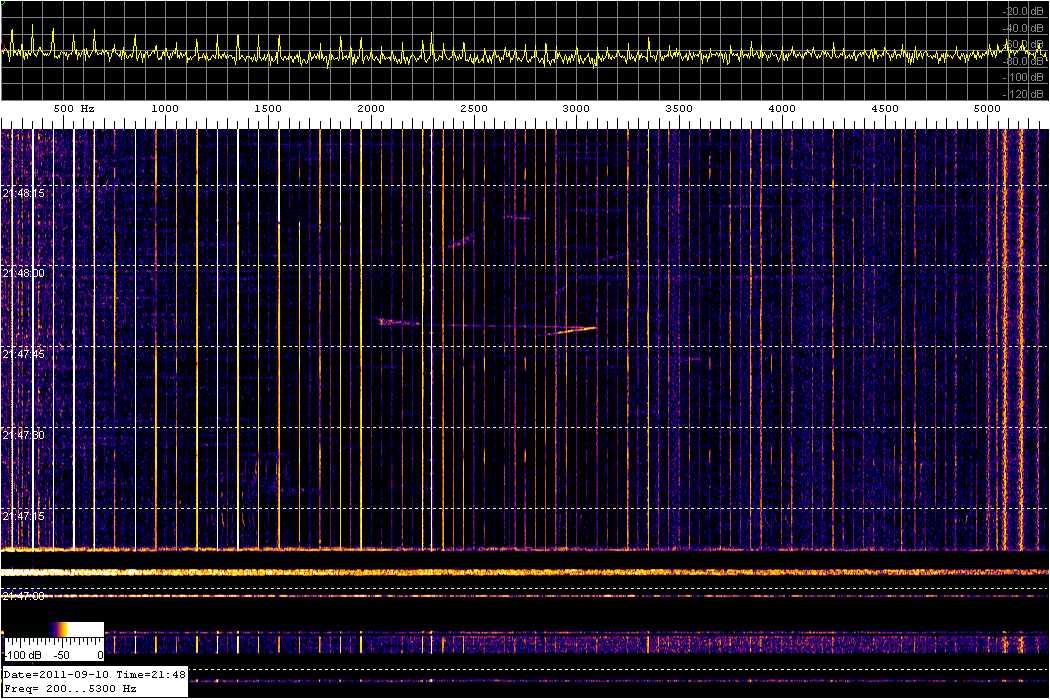
The Hum, a feature of infrastructure, a radical new explanation based on World power grid interactions as to why it was reported in the UK some twenty years before the US derived from spectral analysis of measured ground currents, Bangor as an example .
By Dr Chris Barnes Bangor Scientific Consultants. E-mail scienceconsultants@yahoo.co.uk
ABSTRACT
A brand new theory of the Hum is advanced in terms of interactions in the magnetosphere and ionosphere between world power systems operating at 60 Hz and those operating at 50Hz. The theory accounts elegantly for why the Hum was first heard in the UK in the 1970's and not until some two decades later in the USA. Nothing described in the theory is in major conflict with the known characteristics of the Hum. The Hum might be enhanced when the ground currents arising flow through or nearby piezoelectric rock and nearly all the world locations which have had major outbreaks of the Hum have this underlying. The theory also allows for the Hum to be 'heard' in the traditional sense of the word or perceived by non-acoustic detection in certain sensitive individuals accounting for why it is not always possible to audio record the Hum.
Introduction
The HUM is an (electro) acoustic phenomenon which blights the lives of millions of people throughout the developed World. Those afflicted hear or perceive a low pitched tone or tones often with quasi-periodic modulation and more often at night and indoors. Typically such sounds are difficult to screen out. Those afflicted describe the noise as rather like a bee in bottle or an idling engine but may perceive it up to an octave lower in pitch. The Hum as described in modern times began in the UK in the 1970's with the most famous cases being the Bristol Hum and the Largs Hum and later in the US in the 1990's with the most famous cases there being the Taos Hum and the Kokomo Hum.
There is little published in peer reviewed journals on the Hum and those who embark on its study, particularly with a view to serious publication, have often found themselves in uphill struggles with many hurdles. Because, in particular, the first US cases of the Hum could not always be recorded with traditional sound recording equipment it has in the past somehow been regarded as either falling into the realm of the paranormal or else earned a bad name and to some extent been regarded as the realm of charlatans or crack pots. Yet for those afflicted the Hum is very real. Since there is a lot of anecdotal evidence that the Hum can often either be heard to switch on or off or fade in and out, these are characteristics of signals as defined by electronics, and thus study of the phenomenon should be given much more credence.
For some scientists such as Leventhall, the Hum is merely a manifestation of low frequency noise1 others, Vasudevan and Gordon2, regard the Hum as mainly consisting of random infra sound and low frequency noise from distant factories in a highly skewed acoustic spectrum. Recently Dr David Baguely, Addenbrooks Hospital3, has pronounced that the Hum is simply a product of over-sensitive hearing and it is has been muted that those afflicted ought to just chill out or grin and bear it. Being a hearer of the Hum himself, the author takes the view that such attitudes are not particularly helpful. They make one feel as though it somehow their fault for having this hearing 'affliction'. Further probing for reports on Internet forums and the like reveals a deeper level of complexity, for instance that some hummers are almost deaf, particularly at higher frequencies. Being told 'just relax and ignore it' when you are perceiving a phenomenon with a pulse repetition frequency(ies) in a band or bands associated with the brain's wakeful state when one is trying to sleep is quite frankly next to useless, yet this is the best advice that other academics have come up with. Still, it is regarded as a step forward from Bristol in the 1970's where some would argue British Hum began and where residents were told to go away and wear aluminium helmets!
Some cases of the Hum have been solved and some were indeed down to either natural low frequency noise and infra sound from a volcano4 or from reasonably local anthropogenic sources5. Recently the author has shown that in some parts of the UK when the Hum is manifest in day time acoustic signals have been found in houses with the same frequency as those on high pressure gas mains6. LNG is pumped across large parts of the USA and there are those researchers there who are convinced such pumping and compression is the main source of the US Hum7. However the US has had interstate pipelines in abundance since the 1960's so for the Hum which commenced there in the 1990's perhaps we need to look elsewhere. In most obvious respects of infrastructure, inclusive of distant factories, that the author can think of the US and UK is more or less comparable! This statement alone is very relevant. By the application of a little critical thinking it allows one to dismiss certain previous 'blanket' claims about the Hum. Fox8, for instance suggested that the UK Hum is due to motorways. The US developed the equivalent during the same era and yet their Hum did not begin until twenty years later.
The present author has discussed at least three distinct classes of the Hum in the past. These are; microwave hearing, low frequency magnetic hearing, and Hum involving traditional hearing with an additional infrasonic component. Having personally experienced all three, he believes that most probably exposure to one can sensitise the others through entrainment, particularly for instance if the microwave signals contain appropriate pulse repetition frequencies. In any, Smith has stated in coherent bio-detection, frequency is fractal.9
In the remainder of this discussion, we will limit ourselves to discussing the latter two classes of Hum hearing as defined above. Recently the author has heard Hum like effects under power lines behaving badly and noted the presence of acoustic emissions at power grid sub and inter-harmonic frequencies10,11
The radical hypothesis proposed here is that 50Hz and 60Hz power systems frequencies and their harmonics can intermingle in the earth's magnetosphere and lithosphere to produce the Hum. Their presence here may also alter ULF pulsations contributing to the quasi-periodicity of the Hum. Since the US power grid has more power density than others, historically it would be the first to make its influence known around the planet; hence UK Hum develops in the 1970's. Not until the 1990's and with the advent of large inter-connectors does the UK/European grid have sufficient radiated power to produce similar effects in the US11.
It is known that low frequency seismic signals from, foe example, hydroelectric plants can travel significant distances12 so maybe such signals associated with power grids and/or power generation can affect homes directly. Of course ground currents can flow large distances as well. Some of the early transcontinental telegraph systems relied on this phenomenon discovered by Steinhill in 183613.
Almost all of the areas in the World where the Hum is heard have either metamorphic or igneous geology or are close to the boundaries of both. Such rock types often contain quartzite and other piezoelectric minerals. For instance Taos has a volcanic field with abundant agates and quartz crystals. Kokomo has gold quartz, tourmaline and quartz garnet. The area of Teeside which has recently experienced the Hum has an igneous intrusion of quartz dolomite. Bristol has quartz crystals known locally as 'Bristol diamonds.' Eastern Cornwall has quartz veins. The Sudbury basin has quartz dolomite. Largs has quartz mica schist and a narrow quartz vein. North shore New Zealand has quartz chlorite and dolomite. So if there is a flow a ground current through or past such rock, potential differences will excite the piezoelectric effect14. This in turn will cause seismic signals form the rock to conduct into houses. Power system frequencies are known to be a real problem in certain types of seismic prospecting15.
The hypothesis would be that if the Hum in houses is directly related to power systems as some have said for a long time16 and as the author has more recently acknowledged can sometimes be the case, then monitoring ground currents near a property for any changes during the Hum ought to be an ideal opportunity. This is not unlike monitoring the wall voltage17 except the signals obtained ought to be stronger and have less clutter because they will not be as influenced by voltages or extraneous vibrations inside the property. Further the hypothesis is that the Hum ought to fade in and out depending on earth ionosphere coupling of the two frequency standards and general geomagnetic conditions. For instance, the ionospheric D layer is reinforced at night and is closer to the earth.
With present day technology one can do far better than just monitor the magnitude of the ground current, one can look at a complete frequency- amplitude-time spectrum.
Experimental
The better the current loop antenna the better the results of any proposed study ought to be.
In its simplest sense one could simply drive two electrodes into the ground. Signals received would depend on local moisture and there could be problems with electrode polarisation effects at low frequencies. In Bangor the 50 Hz signal and its harmonics are ubiquitous. However, an attempt was made to choose a ground current loop antenna not directly connected to traditional mains ground in order to minimise any sensitivity swamping effect.
Living in an old house, circa 1932, the author was able to locate the original connection for gas pipe bonding which had long since been replaced by mains earth bonding and so was vacant. This proved extremely useful. The earth loop ‘antenna’ was made between this earth connection and an earth wire leading to a telecom pole on a different part of the property. Neither was expected to carry strong mains earth leakage currents and it was hoped they would act as an antenna for low frequency signals emanating from a range of distances. The laptop was operated from battery only with no connection to mains ground. A screened lead was used to join its microphone input to the antenna loop. Avoidance of using the laptop power supply also ensured it did not generate switch mode frequencies. Both earth connections were long since buried in moist ground and it was expected that the long current loop ought to be capable of detecting local as well as more distant ground currents.
Signals were recorded by a standard laptop sound card and laptop running 'Spectrum Lab software'18. This is essentially designed for Ham Radio consumption but is an extremely effective near real time FFT program with optional waterfall output.
The system was tested for sensitivity by seeking to see if it could record natural radio emissions like whistlers. Using the full scan range of DC to 5.6 KHz, a whistler was captured early into the first night’s experimentation. Whistlers are due to lightening interactions in the earth ionosphere cavity.
Indeed there is so much energy injected from whistlers world wide with up to 2000 separate lightening storms going on at any one moment that it is thought they dominate ULF production in the magnetosphere19.
Spectra were recorded at various times on the 10th and 11th September 2011 when the Hum could be either be heard constantly, at other times when it was fading in and out and finally at times when it had apparently ceased. These spectra were recorded across various frequency ranges of interest in order to home in on specific detail. Typical ranges of interest might be 0-700 Hz, 200-1700Hz and 0-5.6 kHz.
Results and Discussion
The results are simply image files of the frequency-amplitude-time waterfalls obtained in each experiment. They yield up striking differences across significant frequency ranges between the occasions when the Hum was present and the occasions when it was not. After showing the recording of a 'whistler' which validates the receiving system, it is then better to continue with presenting the displays obtained when the Hum was not present and discuss the features seen on these. This will be followed by the same for cases when the Hum was present. In all cases there is a significant wealth of information on each waterfall display.

Figure 1 System Validation 2048 GMT 10TH September 2011
A strong whistler can be seen commencing at about 3.2 kHz and decaying in frequency down to about 2 kHz. This is followed by a sequence of weaker, shorter lived natural radio events between 5 and 2.7 kHz. UK mains frequency harmonics can also be seen.
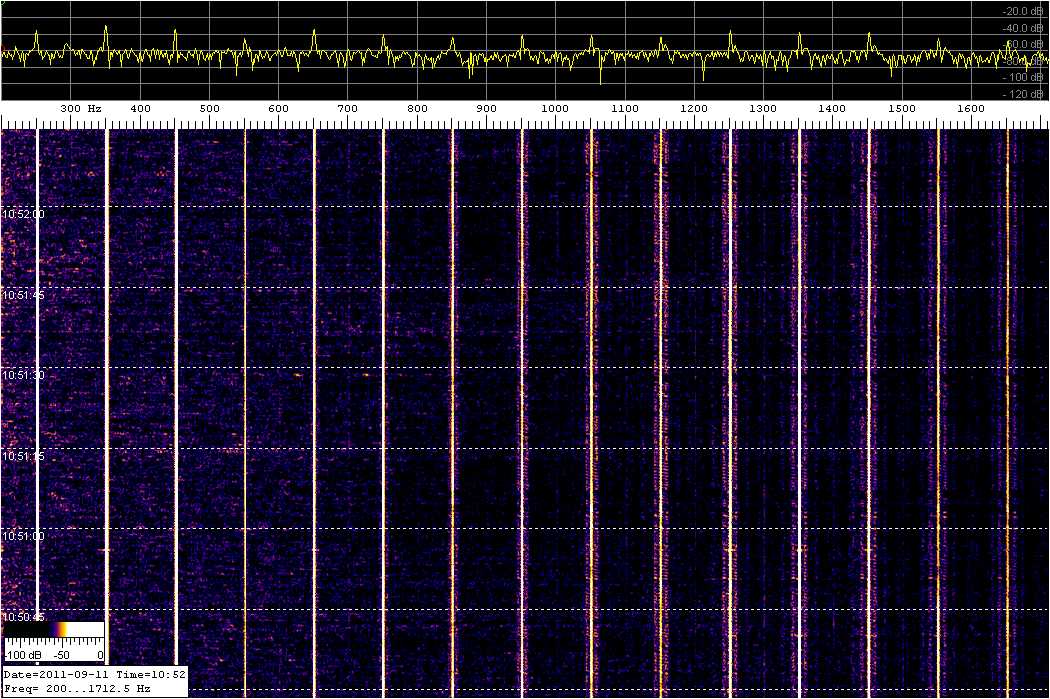
Figure 2 11th September 1047 GMT 0-1700Hz No Hum perceived
Odd harmonics of the UK mains frequency could be seen, the other most striking feature was radio frequency interference prevalent in bursts on the higher harmonics. This was traced by the demodulated sound pattern in the speaker to a nearby powerful paging transmitter. The author did not experience the Hum at the time of this recording. There are also some weak noise bursts mainly in the range 0-200Hz.
F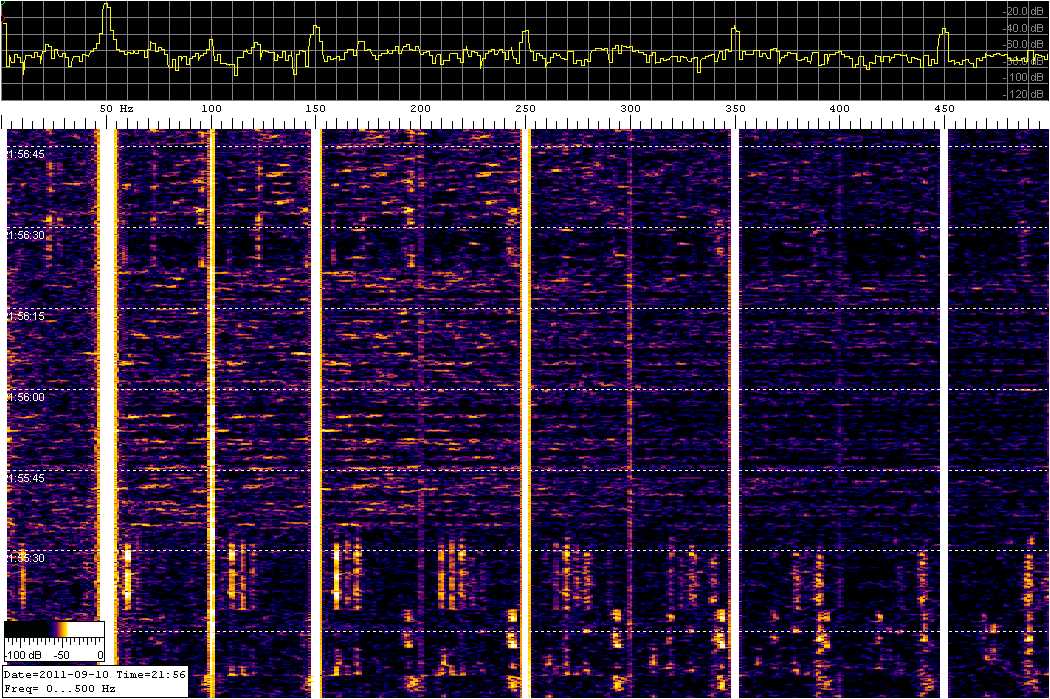
igure
3 Strong Hum 10th September 2156 GMT
This figure shows the spectra when the Hum was perceived strongly by the author.
Even as well as odd harmonics of the UK mains can be seen and there are pulses of other frequencies at about 5, 10, 20 and 25 Hz also at 60,75 95,120,125,130,160,165,170,190Hz and various higher frequencies, with repeated similar frequency spacing. Note that some frequency separations of 20 Hz are present a characteristic of power line harmonic radiation20,21 .
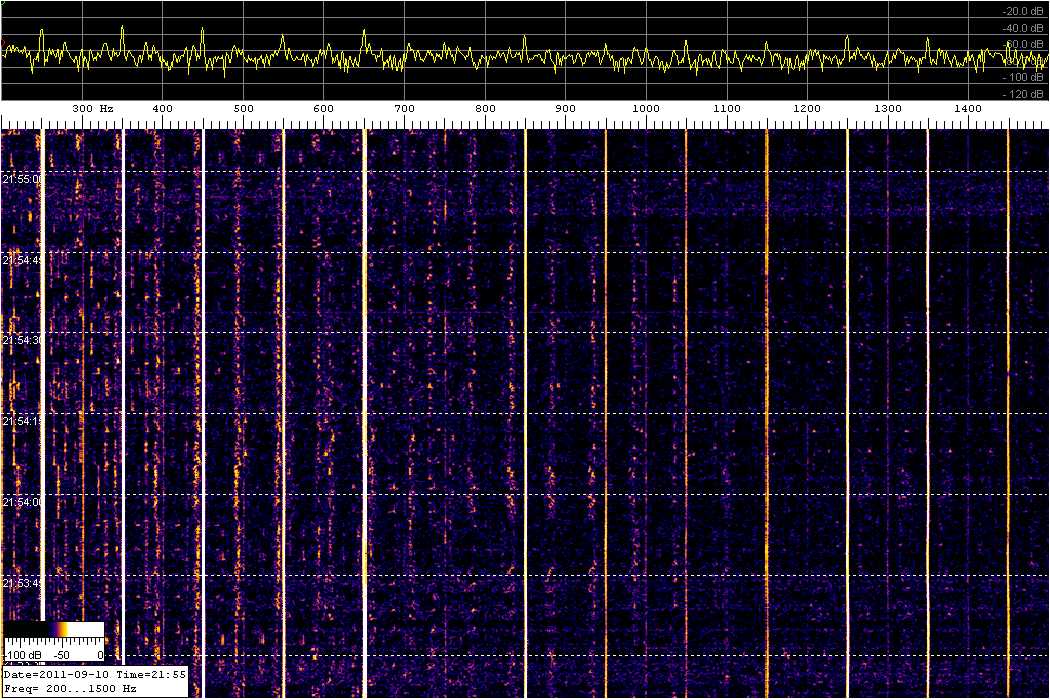
Figure 4 Strong Hum 10th September expanded frequency
range
In addition to UK mains odd harmonics a complex family of intermittent signals at various separations including 10, 20, 30, 50,60Hz can be seen. Most of these signals appear to be of varying amplitude and frequency. This would be expected for power line harmonic radiation being returned to earth. It would also be expected that the detail would be strongest about 500 or 600 Hz and not extend much beyond 1400Hz22, exactly what is observed.
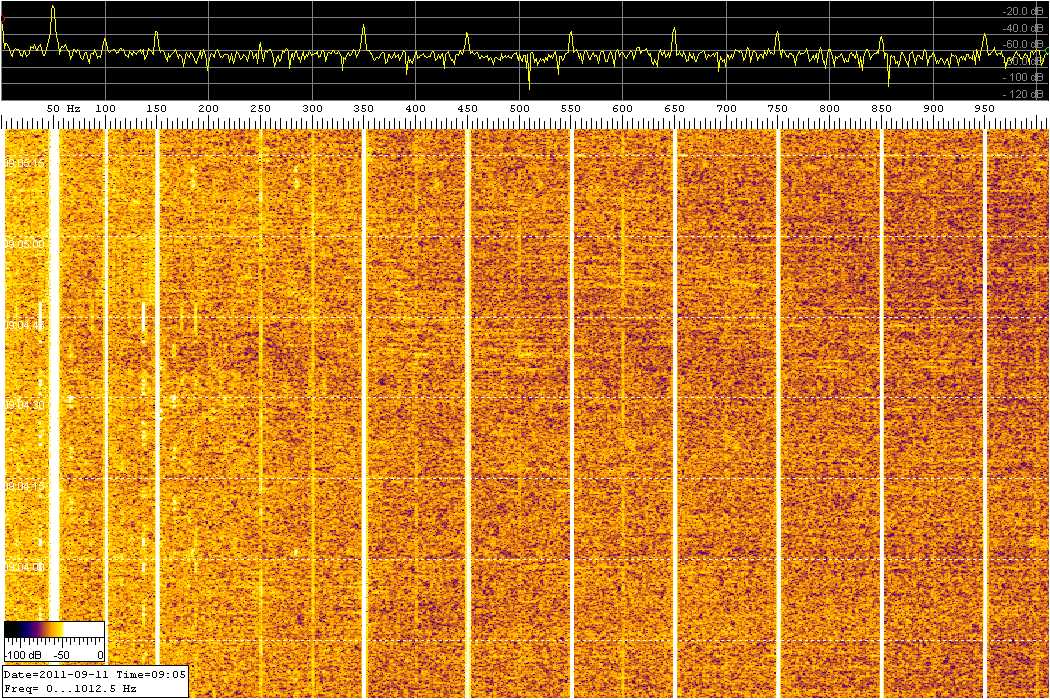
Figure 5 Some Hum 11th September 0801GMT
Contrasting figure 5 with figure 3 shows the additional infrequency's to be less pronounced here. The colour palette has been tweaked in attempt to highlight them. There are weak signal bursts at 10,20,40,60,120,140,160,175 and 275 Hz.
Striking differences in the ground current spectra at the Bangor address have been highlighted at time when the Hum is perceived and times when it is not.
In order to discuss implications for the Hum we need to adequately support the notion that power line frequencies are indeed radiated into space and do indeed interact with the magnetosphere and in the earth ionosphere cavity. Classical electromagnetic theory tells us we should not expect power to be radiated from parallel twin feeder systems due to opposite half cycles causing field cancellation, leaving what some would see as an insignificant amount of power radiated by the line23 Either we than visit the notion of magnetic vector potential and view the line as a horizontal magnetic dipole or we accept this, or we seek reasons why it is not fully so. Purely by empirical observation we can see the theory appears not to be met. For instance, power line frequencies are indeed notorious forms of interference in the study of Schumann resonances24,25 Q-bursts26 .
Indeed some have argued that power line harmonics can actually control the behaviour of the magnetosphere27-29 and that ELF waves can be received with little attenuation at antipodal distances30. There is also one other reference to 50 Hz from the European grid propagating all the way to Arizona31. There is also reference the first three harmonics of 50 and 60 Hz being ubiquitously present round the world as radio signals32 The unanswered question is not now that such propagation is infeasible but how much power is needed to bring it about. Considering the truly enormous capacity of power grids, approximately 5TW for the US grid alone it comes as a surprise that the power radiated to air at the fundamental frequency is the tiniest fraction of this and reckoned to be as little as 2x10-11 of the power flow per 100km of cable. Thus if all 5TW flowed along that 100Km a mere 94 watts of power at the fundamental frequency would be radiated into space. Presumably radiation efficiency will increase for a longer cable. The cause of the radiation is reckoned to be unbalanced currents33 although with values as low as 1mA and ERP as low as 1micro watt. Nunn et al also see the ionosphere as a non linear parametric amplifier. Also highly significant are differences in DC ground potential at the sources and sinks of radiation coupled via the magnetosphere34 . The power may seem insignificant but what we must remember is the for transverse resonances of the ionospheric cavity we are effectively within the near field. The wavelength at 50 Hz is 6000Km and the ionosphere is only about 200 Km deep, so little if any attenuation occurs. Incidentally such radiated powers are a couple of orders of magnitude higher than those estimated to come from the polar electrojet during ionospheric heating experiments by Tromso35 .
Perhaps far more importantly, we must also not forget that the earthbound power systems could actually radiate very significantly more power directly on their higher harmonic frequencies than on their fundamentals. In this respect when creating higher harmonics under short transient conditions the power lines can act as a much more efficient beverage antenna36 The requirements for harmonic distortion in power systems are surprisingly un-robust. IEE 519-1981 allows up to 5% total voltage harmonic distortion for odd harmonics and 25% of that figure for even harmonics. With the advent of inverters, cyclo-converters and DC inter-connectors harmonics have sky-rocketed since the 1980's. Losses in the UK power system are about 2.5% whereas losses in the US power system are about 6.5%. The US power system has many more high voltage DC inter-connectors. DC systems have also been shown to carry harmonics37.
If all the allowed total harmonic distortion of the US power was radiated as power this would represent a staggering 300MW per harmonic up to 2 KHz and an amount about 25% of this for the European Grid. Clearly this is not the case but it does elegantly illustrate the point that harmonic radiation can far surpass that at the fundamental frequency for power systems. Or does the interaction even have to be directly electromagnetic? For instance, it has recently been shown that vertical electrostatic fields cause horizontal electrostatic fields in the ionosphere38. And, more astounding still, can it be acoustic? Here Koshovyy et al show amplification in the amplitude of geomagnetic signals in the range 1-40 Hz by application of infrasound beamed into the ionosphere from earth39 .
Such an observation is relevant to the Hum and power systems for several reasons. Firstly, all power systems generate noise particularly at 100Hz and 120Hz. Wind turbines generate infra sound at about 1.7 Hz which could propagate upwards to the ionosphere under some conditions. Corona noise and Aeolian noise could do likewise. Magnetospheric lines with separations of 20 Hz are seen in the results and other ULF frequencies will be discussed shortly in a new publication by the author.
Thus we have in place all the background for the following. Either that two major power grid frequencies and their respective sets of harmonics modulate each other by non-linear interaction in space or there is direct reception of signals from space one power grid by another and vice versa and/or that such signals or the ULF pulsations they excite by non-linear processes in space* when in the form of ground currents interacted or separately interact with the piezoelectric rock in the ground to produce the seismic vibrations of some manifestations of the Hum. Certainly the same or very similar infrasonic and acoustic frequencies to those obtained in the studies above have sometimes been recorded in association with the Hum.
Given certain threshold amplitude for such processes we are now in a position to elegantly conclude why the Hum as we know it began first in the UK and not until later in the US. The apparently radical hypothesis we initially proposed now fully supported by experimental results and other earth science and perhaps the breakthrough that hum researchers have sought for over forty years!
Finally can we explain some of the other properties of the Hum by this new hypothesis, especially those described previously by the author with respect to the Bangor Hum?
For instance the author has noticed the Hum gets a lot worse before major earthquakes and then subsides afterwards. In the past he has attempted to account for this in terms of changes in ground stress altering propagation in ground borne vibrations. An equally possible explanation supports the above hypothesis. For instance Nagao et al note increased ELF and VLF propagation before the Kobe earthquake40
The Hum seems to vary with tides and the full moon. In the past seismic tilt has been considered by the author but planetary wave periods could be equally relevant41,42 .
The author has noted the Hum varies with the position of the 300mb jetstream. In the past this has been put down to its influence on acoustic propagation. However, equally valid is the notion that the atmosphere and ionosphere are mutually coupled and through complex feedback mechanisms can effect one another43,44 and thus the Hum!
The Hum is heard by some in the very sense of the word while in others it is perceived more internally. For people living in properties over piezoelectric rock there is the potential to perceive Hum through ground borne vibrations and/or through room resonance as previously stated by the author. These notions are NOT in conflict with the new theories of the Hum advanced herein.
Some individuals seem to be able to perceive low frequency magnetic signals directly. Either a cellular bio-resonance phenomenon involving the perturbation of ion transport processes as discussed by the author elsewhere or bio-mineralization in the otoconia structure of the inner ear or in the pineal gland45. These individuals are far more likely to be associated with cases of the Hum that cannot readily be acoustically recorded. Once again this is NOT in conflict with the new theory of the Hum proposed here. Although it is possible the brains of such individuals could process power line harmonics as received rather than their earthbound beats. This is not inconsistent with reports of some people directly hearing, for instance, auroral hiss or electro phonic sounds of fireballs.
It is known that although the probability of power line harmonic activity in the magnetosphere is not related to the geomagnetic Kp value, its intensity is.46 The author is now making further investigations to see if the same is true of the Hum.
Conclusions and future trends
The hypothesis as presented is very strongly supported by the results obtained
Most importantly a good reason for the time disparity in Hum outbreaks in the UK and USA is provided
With more so called 'green-energy pumping' harmonics into power grids and infra sound into the atmosphere we can only expect the Hum to get worse
The only real cure for the HUM would be for the whole world to have one stable and single frequency fully interconnected power grid with and proper wire earth connections!
HF ionospheric heaters and naval communications systems can generate power ELF power densities approaching but not yet equal to those associated with 50 and 60 Hz world power systems, thus there is the possibility of them being involved in some cases of the Hum but they are not the main or sole cause as some reports have alleged. This is obvious as the Hum pre-dates them.
There is an intimate coupling between the earth's magnetosphere, ionosphere, and lithosphere whether we like it or not through modern living our power systems are firmly engrained in that coupling and perhaps in future will even need to be modelled into climate calculations in a way beyond just carbon emissions and may also be relevant in seismology earthquake predictions47
ULF frequencies are observed to modulate the 50 Hz mains fundamental as ground currents, it is hoped to report on the relevance of ULF pulsations to the HUM very shortly.
References
Low frequency noise and annoyance, HG Leventhall, http://www.noiseandhealth.org/article.asp?issn=1463-1741;year=2004;volume=6;issue=23;spage=59;epage=72;aulast=Leventhall
Experimental study of annoyance due to low frequency environmental noise, R.N. Vasudevan, Colin G. Gordon, Applied Acoustics, 10(1), 1977 pp 57-69
The Kokomo Hum Investigation, James P. Cowan, Acentech Project no. 615411,
Presenting a utility by utility acoustic spectral study employing a computer based spectrum analysis program with waterfall output, is the Bangor and surrounding area’s Hum all electric? http://www.btinternet.com/~gmbarnes/UTILITY.htm August 2011
Steve Kohlhase, USA Hum Investigator, Private Communication.
Barry Fox, New Scientist, August 1992, http://www.newscientist.com/article/mg13518321.000-factories-and-traffic-blamed-for-the-hum-.html
Prof. C.W. Smith, Report to House of Lords Technology Committee, (http://www.publications.parliament.uk/pa/cm200910/cmselect/cmsctech/45/45we09.htm).
‘Accounting for the Bangor Hum and can there be any useful generalisations made which would assist Hum studies Countrywide’. Dr Chris Barnes, Bangor Scientific Consultants http://www.btinternet.com/~gmbarnes/DINORWIG.htm August 2011
Monochromatic Components of the Seismic Noise in the NORSAR Area, E. Hjortenberg and T. Risbo, Geophysical Journal of the Royal Astronomical Society, 42(2), 1975.
http://www.morsetelegraphclub.org/files/TelegraphMilestones.pdf
‘Walls have ears but could they have mouths as well? An alternative to thermo-elastic model of microwave hearing allows for human hearing of a.m and f.m as well as pulse signals’, C. Barnes, http://www.btinternet.com/~gmbarnes/HUMWALL.htm, February 2011.
DL4YHF, Spectrum Lab Software, http://www.qsl.net/dl4yhf/spectra1.html
Thunderstorms, Lightening, Sprites and Magnetospheric Whistler Radio waves, D. Singh et al, http://arxiv.org/ftp/arxiv/papers/0906/0906.0429.pdf
Power line harmonic radiation in Newfoundland, K.H. Yearby, A.J. Smith, T.R. Kaiser, K. Bullough, Journal of Atmospheric and Terrestrial Physics, Volume 45, Issue 6, June 1983, Pages 409-419 , http://www.sciencedirect.com/science/article/pii/S0021916983811003
Unintentional man-made modification effects in the magnetosphere, K Bullough, T.R Kaiser, H.J Strangeways, Journal of Atmospheric and Terrestrial Physics, Volume 47, Issue 12, December 1985, Pages 1211-1223,
Planetary and Space Science, Volume 27, Issue 4, April 1979, Pages 537-540, http://www.sciencedirect.com/science/article/pii/0032063379901302
Characteristics of low frequency electric and magnetic fields in the vicinity of electric power lines, Olsen, R.G.; Wong, P.S.K.; This paper appears in: Power Delivery, IEEE Transactions on Issue Date: Oct 1992 Volume: 7 Issue:4 On page(s): 2046 - 2055 ISSN: 0885-8977
Schumann resonances in earth-ionopshere cavity, Rai et al, http://ursi-france.institut-telecom.fr/pages/pages_ursi/URSIGA08/papers/EP2p8.pdf
Q-Bursts: Natural ELF Radio Transients, A. P. Nickolaenko, M. Hayakawa and Y. Hobara, Surveys in Geophysics, Volume 31, Number 4, 409-425, DOI: 10.1007/s10712-010-9096-9
Luette, Park and Helliwell, http://star.stanford.edu/~vlf/publications/220.pdf
Effects of man on geomagnetic activity and pulsations, AC. Fraser-smith, Advances in Space Research, vol. 1, no. 2, 1981, p. 455-466., http://adsabs.harvard.edu/abs/1981AdSpR...1..455F
A weekend increase in geomagnetic activity, http://adsabs.harvard.edu/abs/1979JGR....84.2089F
Reception of ELF SIGNALS at Antipodal Distances, Fraser-Smith, http://www-ee.stanford.edu/~acfs/82Hz.pdf
The
natural background levels of 50/60 Hz radio noise, Fraser-Smith,
A.C.; Bowen, M.M.; Space Telecommun. &
Radiosci. Lab., Stanford Univ., CA, This paper appears in:
Electromagnetic
Compatibility, IEEE Transactions on Issue Date: Aug
1992 Volume: 34 Issue:3
On page(s): 330 - 337 ISSN: 0018-9375 INSPEC Accession Number:
4266743
Digital Object Identifier: 10.1109/15.155849
On the nonlinear triggering of VLF emissions by power line harmonic radiation, Nunn et al, Annales Geophysicae, Volume 17, Number 1, 79-94, DOI: 10.1007/s00585-999-0079-4
Impacts of solar and auroral storms on power line systems. Boerner, W.-M., Cole, J. B., Goddard, W. R., Tarnawecky, M. Z., Shafai, L., & Hall, D. H., , Space Science Reviews (ISSN 0038-6308), vol. 35, June 1983, p. 195-205. Research supported by the National Research Council and University of Illinois; Natural Sciences and Engineering Research Council.
Extra-low-frequency radiation from the polar electrojet antenna, R. Barr, M. T. Rietveld, H. Kopka, P. Stubbe & E. Nielsen, Nature 317, 155 - 157 (12 September 1985); doi:10.1038/317155a0
Overview of power-line radiation and its coupling to the ionosphere and magnetosphere, H. Kikuchi, Space Science Reviews, Volume 35, Number 1, 33-41, DOI: 10.1007/BF00173690, http://www.springerlink.com/content/u840m67307v73214
A
multifrequency power flow of general applicability, Arrillaga, J.;
Watson, N.R.; Bathurst, G.N.; This paper
appears in: Power
Delivery, IEEE Transactions on
Issue Date: Jan.
2004 , Volume: 19 Issue:1
On
page(s): 342 - 349 ISSN: 0885-8977
Quasielectrostatic model of atmosphere-thermosphere-ionosphere coupling, S.A. Pulinets, K.A. Boyarchuk, V.V. Hegai, V.P. Kim1, A.M. Lomonosov., Advances in Space Research, Volume 26, Issue 8, 2000, Pages 1209-1218. http://www.sciencedirect.com/science/article/pii/S0273117799012235
Koshovvy et al, http://www.ursi.org/Proceedings/ProcGA05/pdf/EGH.10(01655).pdf
Electromagnetic anomalies associated with 1995 Kobe earthquake, T. Nagaoa, Y. Enomotob, Y. Fujinawac, M. Hatad, M. Hayakawae, Q. Huanga, J. Izutsuf, Y. Kushidag, K. Maedah, K. Oikef, S. Uyedaa, T. Yoshinoi, Journal of Geodynamics, Volume 33, Issues 4-5, May-July 2002, Pages 401-405
VLF/LF sounding of the lower ionosphere to study the role of atmospheric oscillations in the lithosphere-ionosphere coupling, Molchanov et al http://cat.inist.fr/?aModele=afficheN&cpsidt=18780421
Highly
relativistic magnetospheric electrons: A role in coupling to the
middle atmosphere? GEOPHYSICAL RESEARCH LETTERS, VOL. 14, NO. 10,
PP. 1027-1030,
1987
doi:10.1029/GL014i010p01027http://www.agu.org/pubs/crossref/1987/GL014i010p01027.shtml
Coupling from below as a source of Ionospheric variability- a review, E.S.Kazimirovsky, http://www.annalsofgeophysics.eu/index.php/annals/article/viewFile/3482/3527
Atmosphere–Ionosphere Electrodynamic Coupling, V. M. Sorokin and V. M. Chmyrev, The Atmosphere and Ionosphere
Calcite microcrystals in the pineal gland of the human brain: first physical and chemical studies, Baconnier S, Lang SB, Polomska M, Hilczer B, Berkovic G, Meshulam G, Bioelectromagnetics. 2002 Oct; 23(7):488-95.
.
Power Line Harmonic Radiation observed by the DEMETER spacecraft, Nemec et al , http://www.next-up.org/pdf/2005JA011480.pdf
Measurement
of Earth electric potentials and ULF signals for seeking earthquake
precursors, Boytchev, B.V.; Nenovski, P.I.; This
paper appears in: Recent
Advances in Space Technologies, 2005. RAST 2005. Proceedings of 2nd
International Conference on
Issue Date: 9-11 June
2005 On page(s): 788 - 792 Print ISBN: 0-7803-8977-8
![]()
![]()